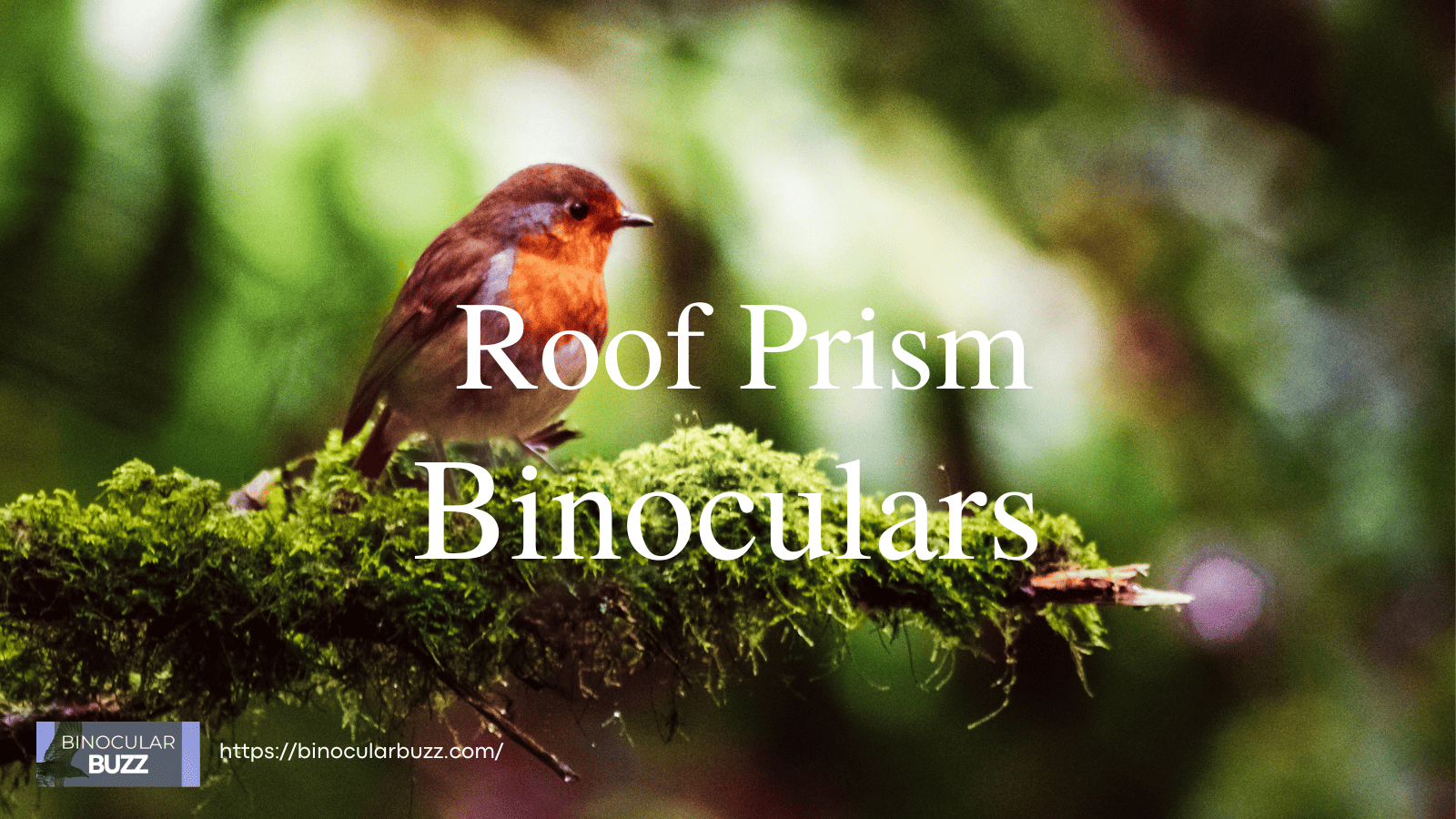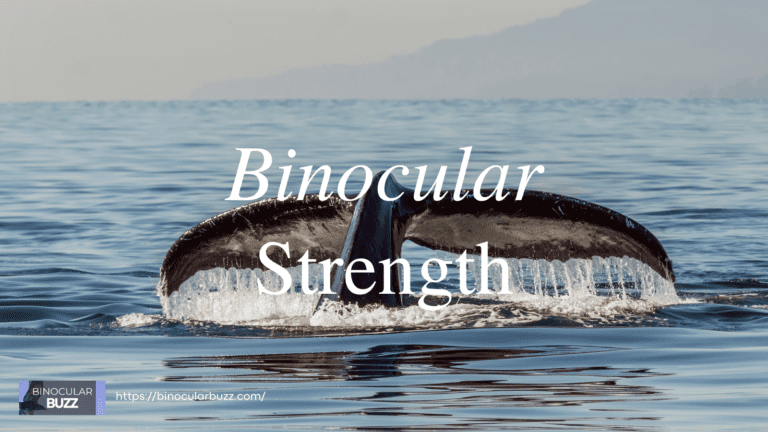Roof Prism Binoculars: A Practical Guide [2024]
Prisms are used in binoculars to turn the magnified image right side up. Without the use of prisms, your binocular view would be upside down. The two main types of prism configuration used in binoculars are roof prisms and porro prisms.
The basic difference between roof prism binoculars and porro prism binoculars is the way the prisms are arranged within the binocular body. Porro prism binoculars have objective lens tubes that are offset from the eyepieces, while roof prism binoculars have two straight tubes, making them sleeker.
This site participates in the Amazon Services LLC Associates Program designed to give sites like ours a way to earn advertising fees by linking to products on Amazon.com at no additional cost to you. I appreciate your support. Thank you!
Why Do Binoculars Have Prisms?
The optical system of a binocular uses a combination of lenses and prisms. Binoculars have lenses to magnify the image. On the other hand, binoculars have prisms for:
- Image orientation: The lenses in binoculars actually flip the image upside down and backwards! Prisms, like magic mirrors, bend and reflect the light path to correct the orientation, delivering a right-side-up view to your eyes.
- Compactness: Without prisms, binoculars would be much longer and bulkier. Prisms fold the light path within the binoculars, allowing them to be smaller and more portable. This is especially important for high-magnification binoculars, which would otherwise be unwieldy.
There are two main types of prisms used in binoculars:
Roof Prism Binoculars
Roof prisms, as the name suggests, have a roof-like shape inside the binoculars. This design folds the light path more tightly, making the binocular more compact and lightweight, ideal for outdoor activities that require portability.
The optical path in roof prism binoculars is straight, resulting in a sleek and streamlined shape. However, the eyepieces may be closer together, which can be less comfortable for some users.
Porro Prism Binoculars
Porro prism binoculars have an offset design that resembles a zigzag pattern. This design allows for a longer optical path, which contributes to better depth perception and image quality.
Porro prism binoculars are known for their wider field of view and typically offer a more immersive viewing experience. Porro prisms create a wider separation between the eyepieces, making them more comfortable to hold. However, they also make the binoculars larger.
Schematic

The above schematic, courtesy CELESTRON, shows how light travels within the binocular tubes in each case. Below is a real life example of the two types. Celestron – Nature DX 8×42 is a Roof Prism Binocular while Celestron – Ultima 8×42 is a Porro Prism Binocular
Advantages of Roof Prism Binoculars
Roof prism binoculars offer several key advantages over their Porro prism counterparts, making them a popular choice for many users. Here are some of the highlights:
1. Compactness & Lightweight
The defining characteristic of roof prisms is their ability to keep the light path on a straight line, within the binoculars. This results in a much more sleek and streamlined design, making them significantly smaller and lighter than Porro binoculars of similar magnification.
This makes them ideal for hikers, travelers, and other outdoor enthusiasts who are constantly on the move and would like to carry their binoculars with ease.
2. Higher Quality Optics
Roof prism binoculars are known for their high-quality optics. The prism design allows for improved light transmission, resulting in brighter and sharper images. This is especially important when observing wildlife, sports events, or enjoying scenic views.
3. Waterproof and Fog-proof
The internal optical components of roof prism binoculars are often better protected due to their sealed construction. This makes them more resistant to dust, moisture, and shocks, ideal for outdoor activities in challenging conditions. Additionally, some models offer enhanced waterproofing and fog-proofing, further improving their durability.
3. Modern & Sleek Looks
Roof prism binoculars typically have a modern and stylish design with straight barrels, appealing to many users. They come in a variety of sizes and finishes, allowing you to choose one that complements your personal style.
4. Excellent Close Focus
Some high-end roof prism binoculars boast excellent close focus capabilities, allowing you to observe objects at very short distances. This is particularly useful for activities like insect observation or butterfly watching.
5. Twist-up Eyecups
Many roof prism binoculars feature twist-up eyecups, allowing you to adjust the distance between your eyes and the eyepieces for optimal viewing comfort. This is especially helpful for users who wear glasses.
How to Choose the Right Roof Prism Binoculars
When selecting roof prism binoculars, there are a few key factors to consider. Here’s a handy checklist to help you:
- Magnification power: Determine the level of magnification you require for your specific activities.
- Objective lens diameter: The size of the objective lens affects the amount of light gathered and the overall brightness of the image.
- Field of view: Evaluate the width of the area visible through the binoculars, which is particularly important for watching birds in flight, hunting or taking in panoramic views.
- Eye relief: If you wear glasses, choose binoculars with sufficient eye relief to ensure comfortable viewing.
Some Popular Brands and Models
To help you make an informed decision, here are some popular roof prism binocular brands and models you could take a look at:
Click the link below for more information on each model
Are Roof Prism Binoculars Waterproof?
A significant advantage of choosing roof prism binoculars over porro prism binoculars is that they are more likely to be waterproof or water-resistant and fog-proof. Of course, this is not to state that all roof prism binoculars are waterproof. You need to check!
The Significance of Waterproof Binoculars
Investing in waterproof binoculars has numerous advantages. Here are some of the key benefits:
- Protection from the Elements: Waterproof binoculars are designed to withstand exposure to rain, snow, or even accidental immersion in water. They are sealed with O-rings and filled with nitrogen or argon gas, preventing moisture from seeping into the optical system.
- Durability and Longevity: Waterproofing not only protects your binoculars from water damage but also enhances their overall durability. This means they can withstand harsh environmental conditions, ensuring they last longer and provide reliable performance over time.
- Versatility: Waterproof binoculars are versatile companions that can accompany you on various adventures. Whether you’re birdwatching in a drizzle, hiking through a rainforest, or boating on a lake, waterproof binoculars will continue to deliver crisp and clear views, regardless of the weather.
How to Identify Waterproof Binoculars
To determine if a specific pair of binoculars is waterproof, you need to examine their specifications. Look for the following indicators:
- Waterproof Rating: Check if the binoculars have an official waterproof rating, typically expressed in terms of IPX (Ingress Protection) standards. For example, a rating of IPX7 means the binoculars can withstand immersion in water up to 1 meter for 30 minutes.
- O-ring Sealing: Ensure that the binoculars feature O-ring seals. These rubber seals are placed at crucial points of potential water entry, such as the eyepiece and focus knobs, creating a watertight barrier.
- Gas Purging: Look for binoculars that are nitrogen or argon purged. This process removes any moisture or impurities from the internal air, preventing fogging or condensation on the lenses, even in extreme temperature variations.
Top Brands Offering Waterproof Binoculars
Several reputable brands offer a wide range of reliable waterproof binoculars. Here are a few examples:
- Nikon – Nikon’s Monarch and Prostaff series offer waterproof binoculars known for their exceptional performance and durability.
- Zeiss – Zeiss produces high-quality waterproof binoculars, such as the Terra ED series, which combine precision optics with robust construction.
- Vortex – Vortex Optics provides a diverse lineup of waterproof binoculars, including the popular Diamondback and Crossfire series, known for their ruggedness and excellent value for money.
Factors to Consider When Choosing Binoculars
When it comes to selecting the right binoculars for your needs, there are a few important factors that you should consider. These factors can help you make an informed decision and ensure that you choose a pair of binoculars that will best suit your specific requirements. Let’s delve into these factors below:
1. Environment
The environment in which you intend to use your binoculars plays a crucial role in determining the type of binoculars you should opt for.
If you plan on using your binoculars in wet or humid conditions, such as during birdwatching trips in the rainforest or marine activities, it is highly advisable to prioritize waterproof models.
These binoculars are specifically designed to withstand exposure to water, preventing any damage to the internal components.
2. Budget
While waterproof binoculars are a valuable feature for certain activities, they generally come at a slightly higher price point. Think about your requirements and how frequently you will be using your binoculars in wet conditions.
If waterproofing is not a top priority, you might be able to find non-waterproof binoculars that offer similar optical performance at a lower cost.
3. Magnification and Objective Lens Diameter
The magnification and objective lens diameter are two essential specifications that determine the viewing capabilities of binoculars.
Binocular magnification gives you a good idea of how much closer the binoculars can make the distant objects appear. On the other hand, the objective lens diameter determines the amount of light the binoculars can gather.
The specific activities for which you will be using your binoculars are a good guide to determine the appropriate magnification and objective lens diameter.
Higher magnification can be beneficial for activities such as stargazing or wildlife observation, while a larger objective lens diameter can enhance low-light performance.
4. Weight and Size
The weight and size of binoculars are important considerations. Compact and lightweight binoculars are ideal for hiking, backpacking, or any activity that requires mobility and convenience.
On the other hand, bulkier and heavier binoculars with larger objective lenses offer superior image quality and are better suited for astronomy or research where you can observe from a stationary position.
5. Eye Relief and Comfort
Eye relief refers to the distance between the eyepiece of the binoculars and your eye when the entire field of view is visible.
If you wear glasses, look for binoculars with long eye relief to ensure that you can still enjoy a full view without having to remove your glasses. Additionally, consider the overall comfort of the binoculars, including the design of the eyecups and the ease of adjusting the focus.
6. Brand and Model
When it comes to binoculars, certain brands and models have established a reputation for producing high-quality optics. Do your research and consider the reputation and customer reviews of different brands and models.
Some renowned brands in the field of binoculars include Nikon, Zeiss, Swarovski, and Vortex, to name a few. By opting for a reputable brand, you can have more confidence in the quality and performance of your binoculars.
Key Takeaways
- Environment: Consider waterproof models for wet or humid conditions.
- Budget: Determine the importance of waterproofing based on your needs and budget.
- Magnification and Objective Lens Diameter: Assess the requirements of your activities to select the appropriate specifications.
- Weight and Size: Choose between compact convenience and larger image quality.
- Eye Relief and Comfort: Look for long eye relief and ergonomic design.
- Brand and Model: Research reputable brands such as Nikon, Zeiss, Swarovski, and Vortex.














